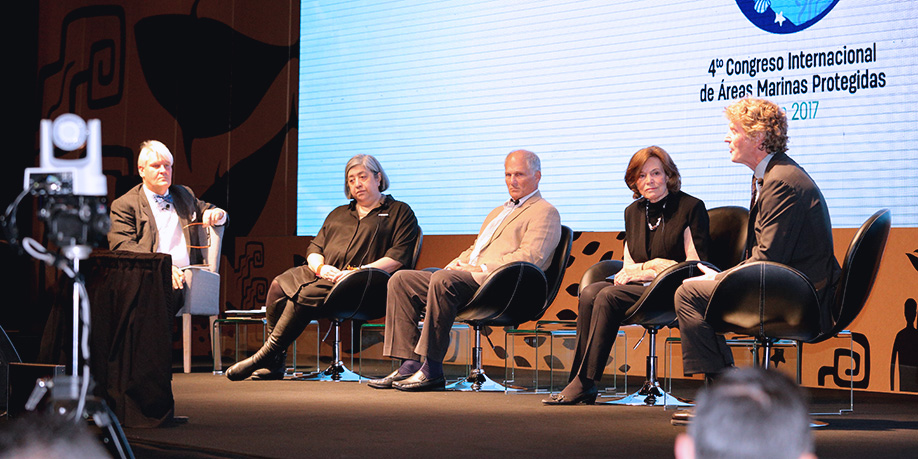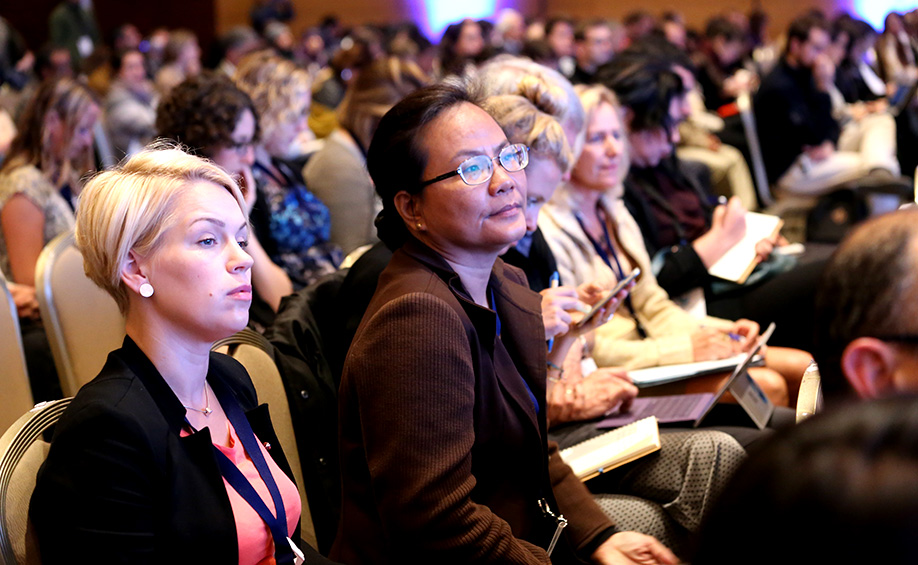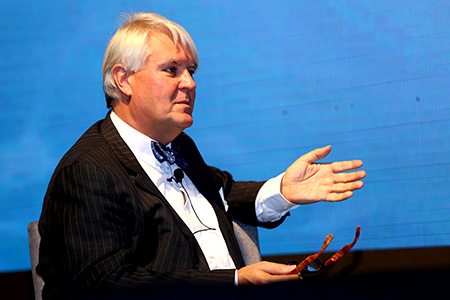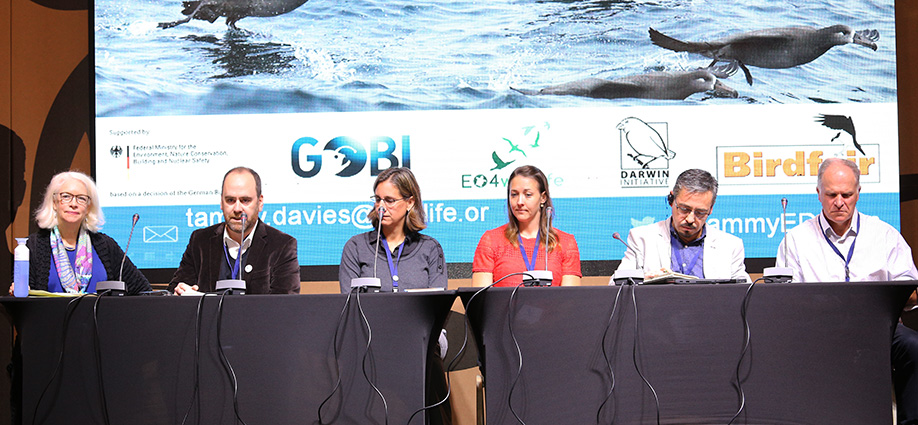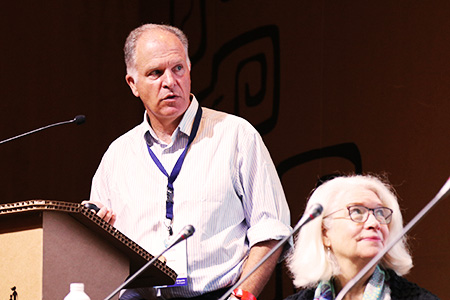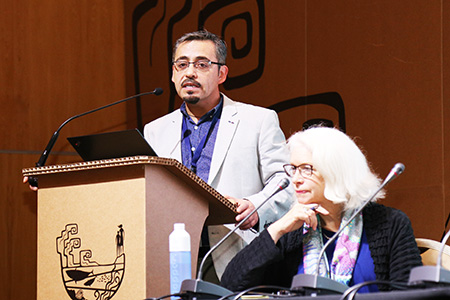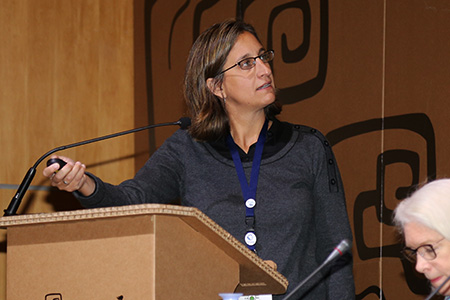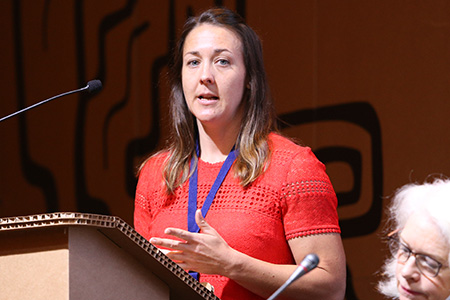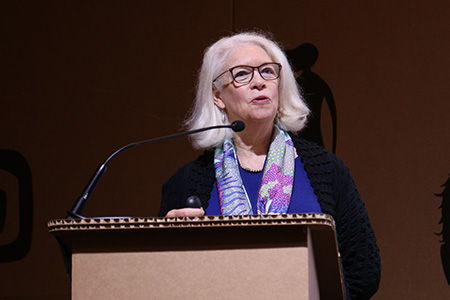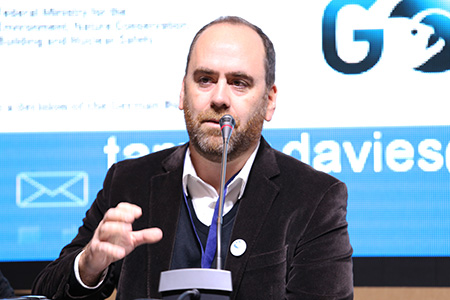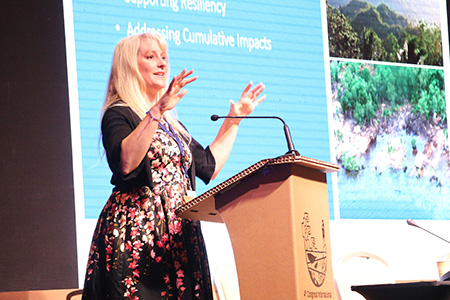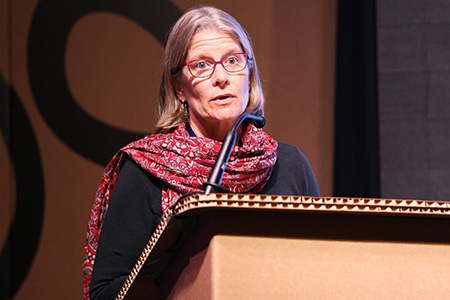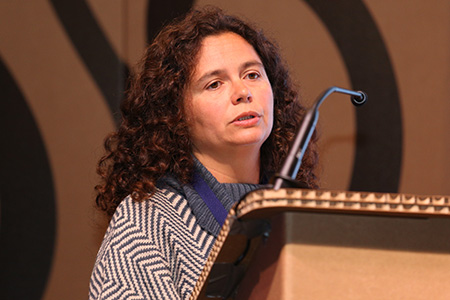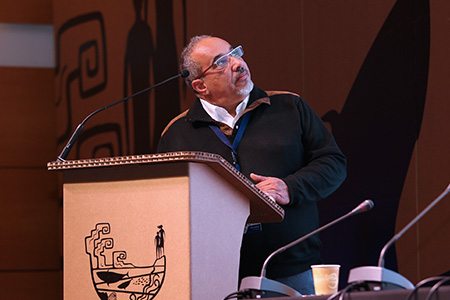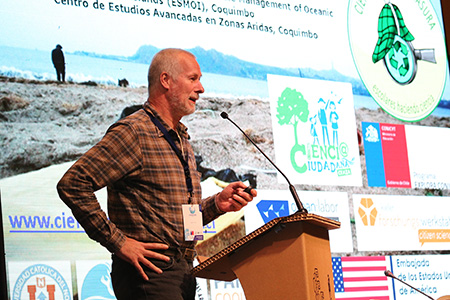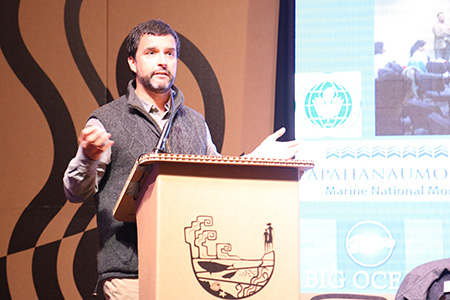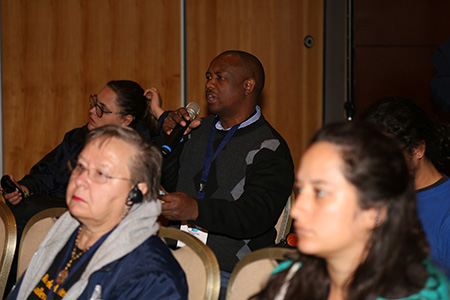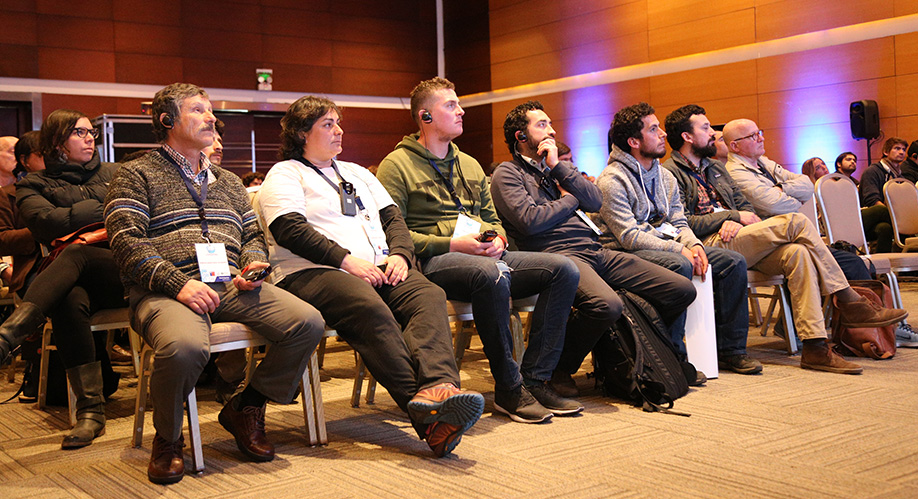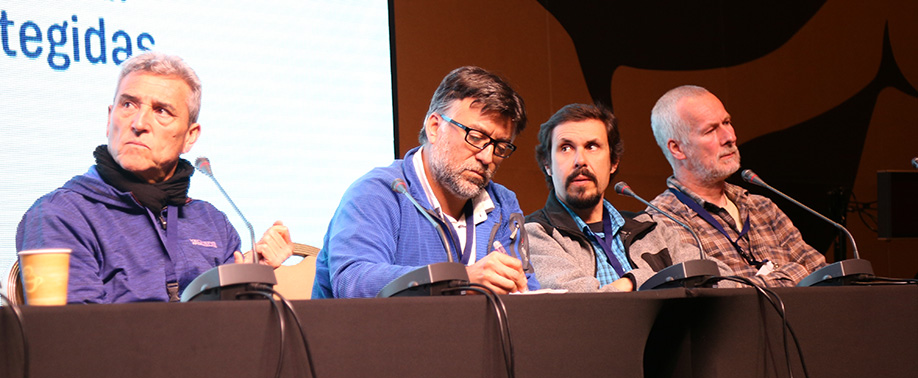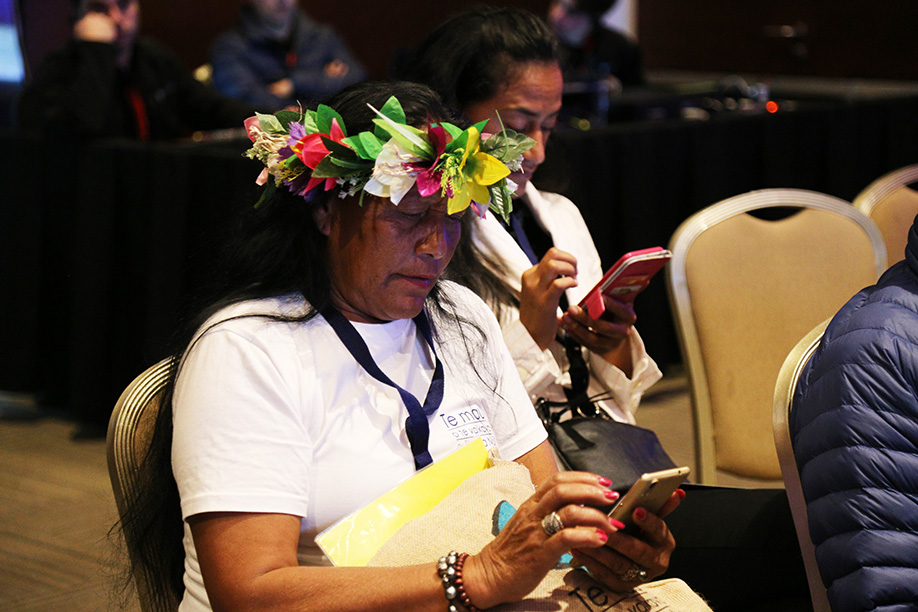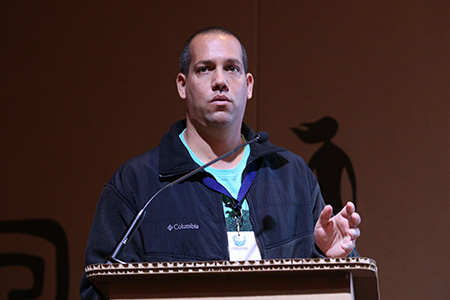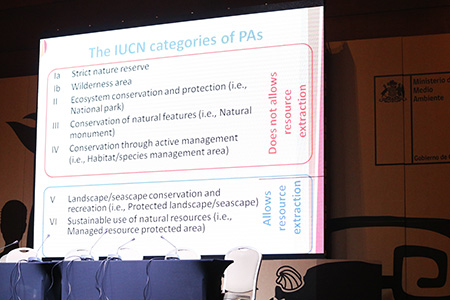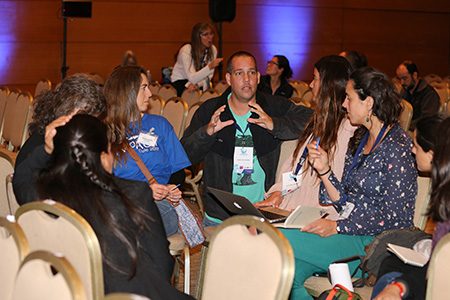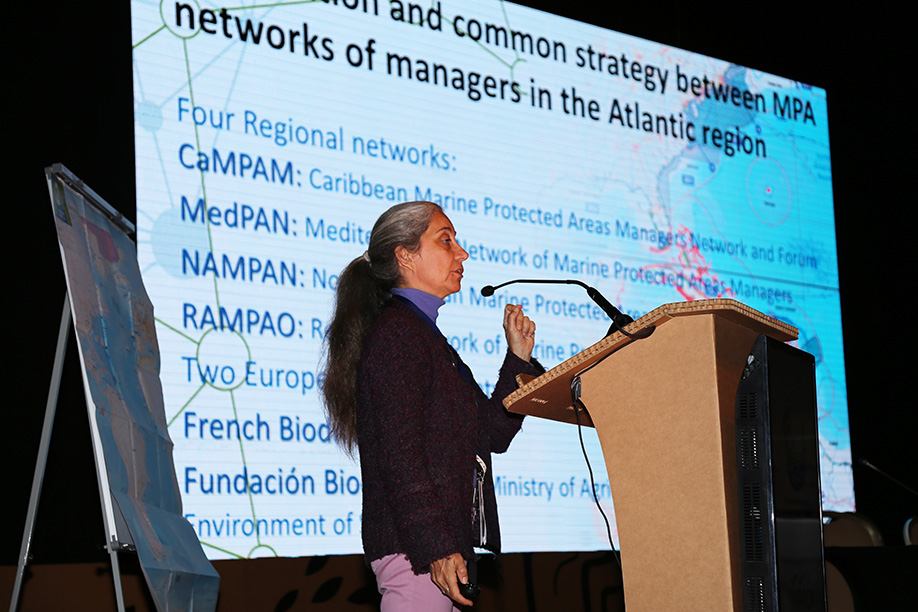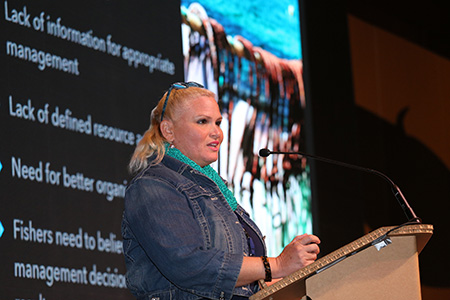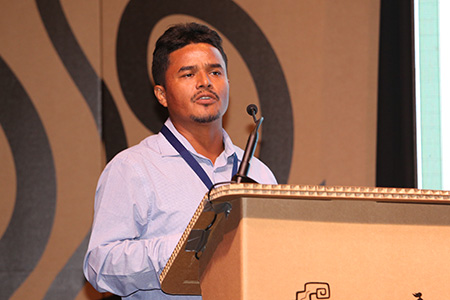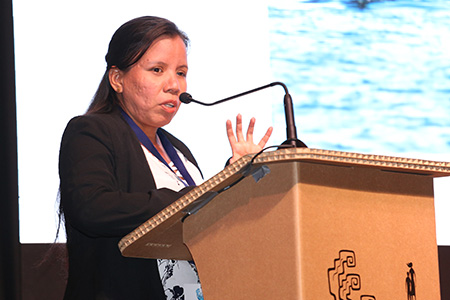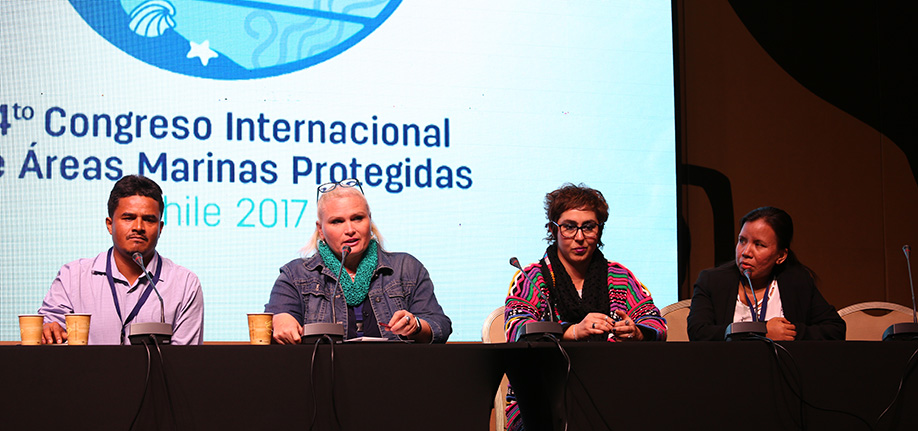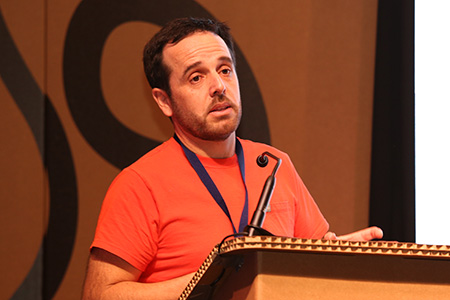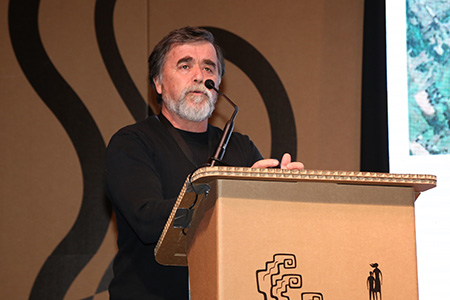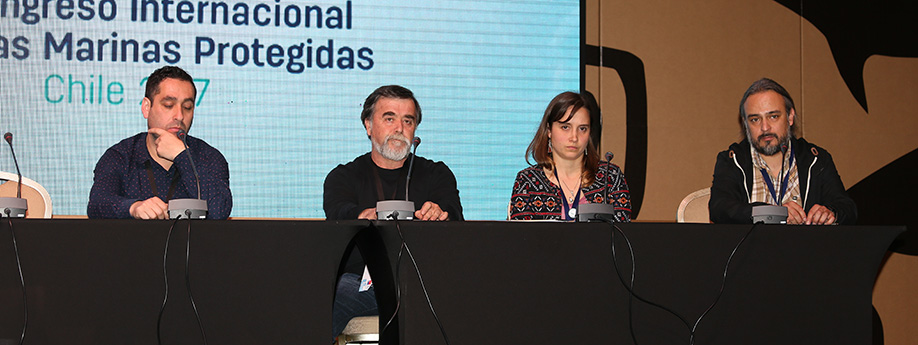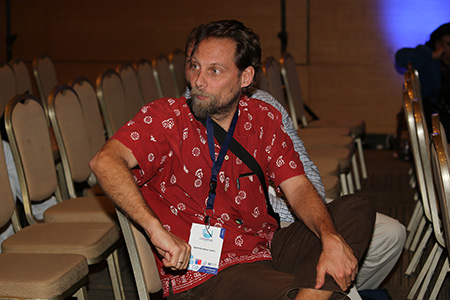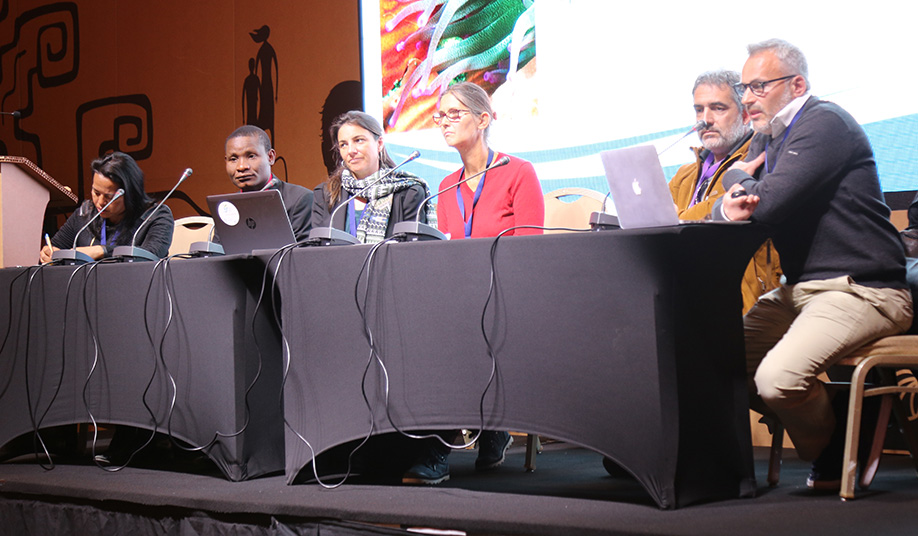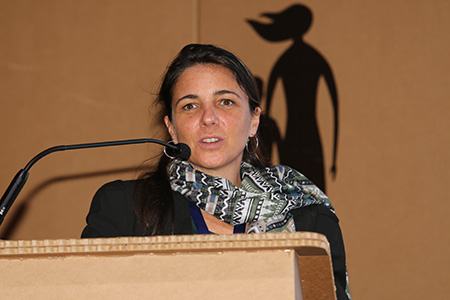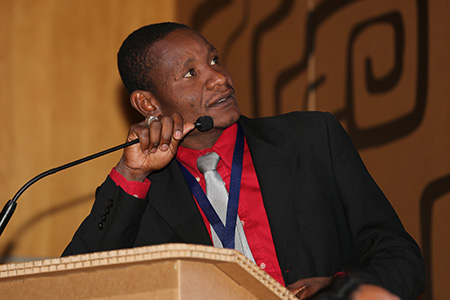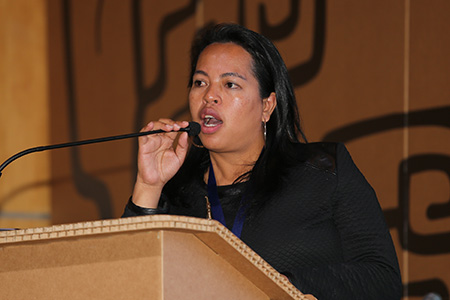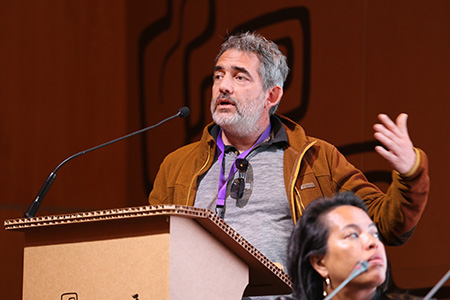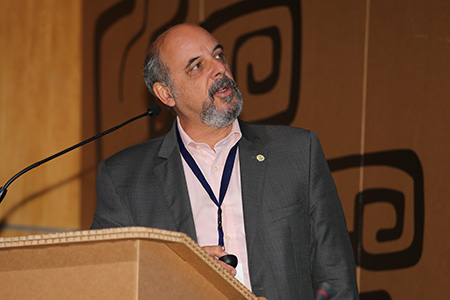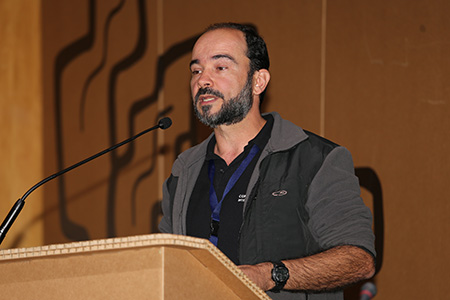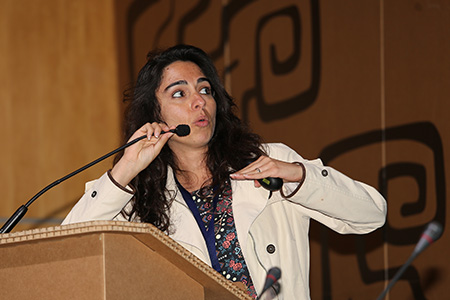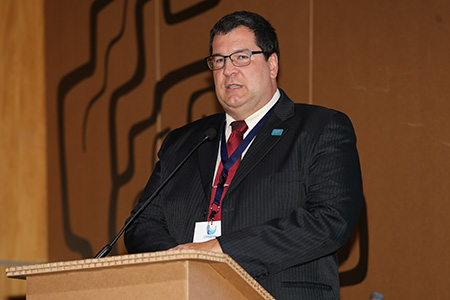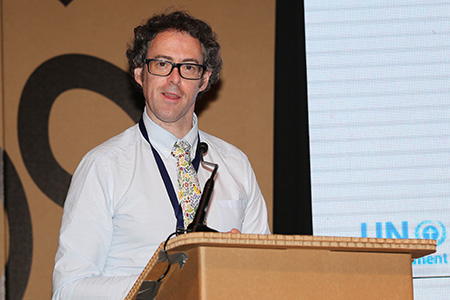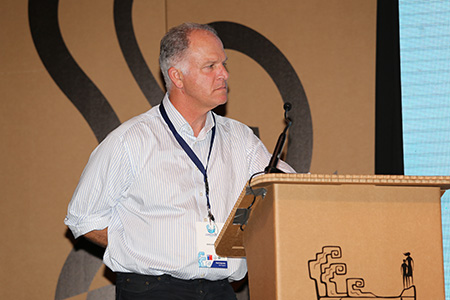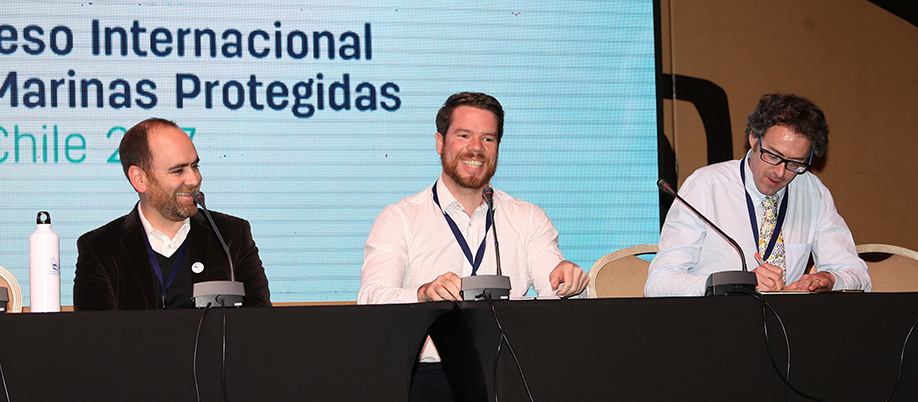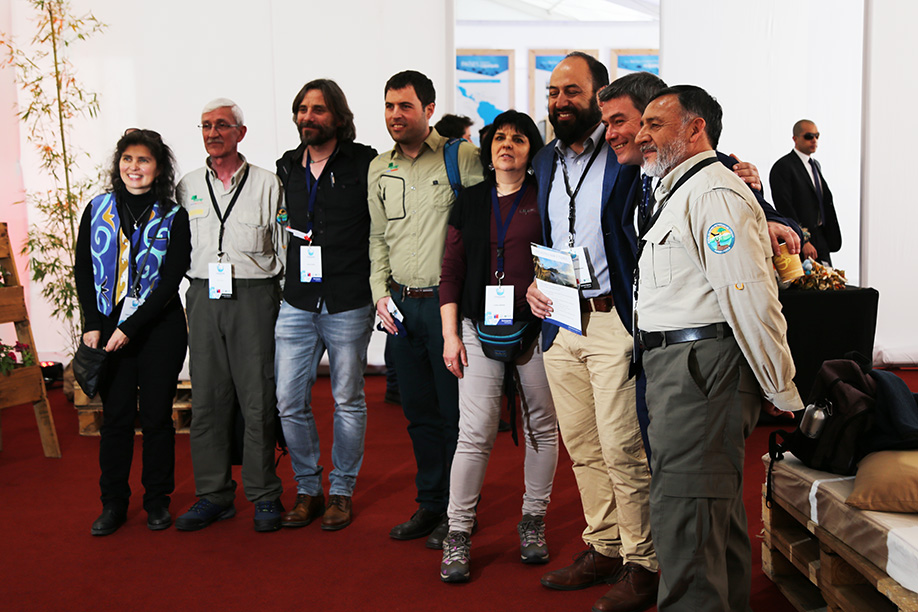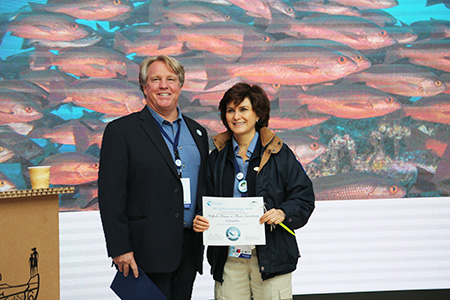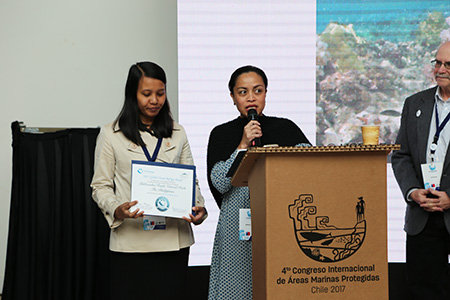Summary
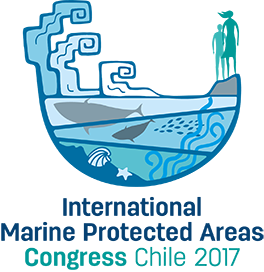
The first full day of the fourth International Marine Protected Areas Congress (IMPAC4) convened in La Serena, Chile on Tuesday, 5 September 2017. Convened around the theme, ‘Marine Protected Areas (MPAs) and Global Change,’ the day saw many events taking place with a plenary session in the morning, and a number of symposia, workshops, oral presentations, knowledge cafés and poster presentations taking place throughout the day.
The morning’s plenary session saw a panel discussion on the day’s theme, with participants highlighting the challenges the world’s oceans face and the roles MPAs can play in addressing these challenges. Key points included: MPAs provide “safe havens” for threatened and vulnerable marine species; multi-tiered approaches to managing MPAs can provide robust results; and, that stories and imagery can inspire action and change for ocean conservation.
Highlights from the symposia included discussions on: MPAs and climate change; the role and future of ecologically or biologically significant marine areas (EBSAs); taking fisheries management and MPAs to scale; coastal reserves networks; multiple use MPAs as an opportunity to ally conservation, sustainable fisheries and community development in low governance environments; and, achieving Aichi Biodiversity Target 11 in marine and coastal areas.
Workshop highlights included an exercise on methodologies to choose MPA IUCN categories based on ecosystem services, and discussions on steps towards a transatlantic partnership of MPAs. Other workshops that took place included the role of MPAs as natural solutions, and incorporating coral ecological services and functions valuation into compensatory mitigation for reef damage.
Photos by IISD/ENB | Ángeles Estrada Vigil
Opening plenary session
(L-R): Carl Gustaf Lundin, IUCN, Patricia Majluf, Oceana, Peru, Alan Friedlander, University of Hawaii, Sylvia Earle, Mission Blue, and Alexander Tudhope, University of Edinburgh
Sylvia Earle, Mission Blue
Alexander Tudhope, University of Edinburgh
Participants during the opening plenary session
Carl Gustaf Lundin, IUCN
Alan Friedlander, University of Hawaii
Next steps for EBSAs
(L-R): Kristina Gjerde, US, Daniel Dunn, Duke University, Beth Pike, Marine Conservation Institute, Tammy Davies, Birdlife International, Mauricio Gálvez, Instituto de Fomento Pesquero (IFOP), and David Johnson, Global Ocean Biodiversity Initiative (GOBI)
David Johnson, GOBI
Mauricio Gálvez, IFOP
Beth Pike, Marine Conservation Institute
Tammy Davies, Birdlife International
Kristina Gjerde, US
Daniel Dunn, Duke University
MPA acting on climate change
Gabrielle L. Johnson, National Oceanic and Atmospheric Administration (NOAA)
Anne Nelson, NOAA
María del Mar Otero, IUCN
Jean-Jacques Goussard, Environment and Development Network
MPAs in Chilean oceanic islands
Martin Thiel, Universidad Católica del Norte (UCN)
Beatriz Yannicelli, UCN
Carlos Gaymer, UCN
Dais during the session
How to protect? A method to choose MPA IUCN Categories based on ecosystem-services
Apoena Calixto Figueirôa, Federal University of Santa Catarina
The IUCN categories of PAs
Participants during the workshop
Participants during the workshop
Towards a transatlantic partnership of MPAs
Puri Canals, Mediterranean Protected Areas Network
Alessandra Vanzella-Khouri, Caribbean Marine Protected Areas Management
Marie Suzanne Traore, African Regional Network of Marine Protected Areas (RAMPAO)
Taking fisheries management and MPAs to scale: Tools and case studies from around the world
Amy Hudson Weaver, Sociedad de Historia Natural Niparajá
Layla Osman, Environmental Defense Fund (EDF)
Nicanor Requena, EDF
Mónica Alzamora, Naturaleza y Cultura Internacional Perú
(L-R): Nicanor Requena, EDF, Amy Hudson Weaver, Sociedad de Historia Natural Niparajá, Layla Osman, EDF, and Mónica Alzamora, Naturaleza y Cultura Internacional Perú
Coastal reserves network: "A public-private tool to promote governance, protection and promotion of sites of high ecological and cultural interest"
Jorge Valenzuela, Centre for the Study and Conservation of Natural Heritage (CECPAN)
Nelson Cárcamo, Municipality of Castro
(L-R): Christian Cardenas, Municipality of Quellón, Nelson Cárcamo, Municipality of Castro, Maria Elisa Puig, Ministry of National Assets, Chile, and Claudio Castro, Ministry of Environment, Chile
Essential ecosystems: Protections against climate change
(L-R): Mbolatiana Andramiarinosy, Madagascar, Ismak Ado Beassou, Maire de Sainte-Marie, Madagascar, Adele de Toma Cadinouche, Indian Ocean Commission, Janique Etienne, French Facility for Global Environment, Sylvain Faugeron, UCA, and Francis Staub, International Coral Reef Initiative
Adele de Toma Cadinouche, Indian Ocean Commission
Ismak Ado Beassou, Maire de Sainte-Marie, Madagascar
Mbolatiana Andramiarinosy, Madagascar
Sylvain Faugeron, Pontifica Universidad Catolica de Chile
Multiple use MPAs as opportunities to ally conservation, sustainable fisheries and community development in low governance environments
Claudio Maretti, Chico Mendes Institute for Biodiversity Conservation
Guilherme Dutra, Conservation International Brazil
Anna Carolina Lobo, WWF-Brazil
Luis Henrique de Lima, Rare Brazil
Sharing experiences on achieving Target 11 in marine and coastal areas, including the contribution of other area-based conservation measures
Brian Mac Sharry, UN Environment World Conservation Monitoring Centre (UNEP-WCMC)
David Johnson, GOBI
Daniel Dunn, Duke University, Joseph Appiott, CBD Secretariat, and Brian Mac Sharry, UNEP-WCMC
Around the Venue

